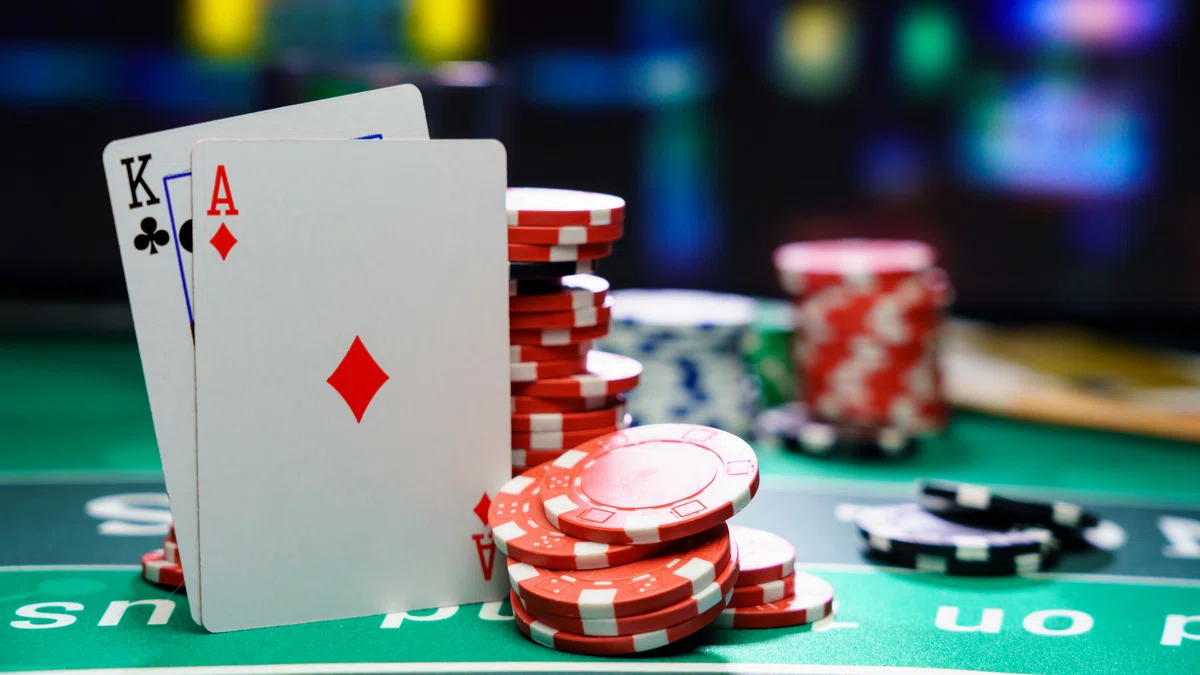Among blackjack strategies, there’s no technique quite like card counting. While most casino strategies focus on reacting to the action of the game, blackjack card counting is all about predicting card values before they land. As you’d expect, this pre-emptive playing method requires a decent memory and intimate knowledge of how blackjack decks work.
You can start on that learning journey right here, where we’ve explained what card counting is and how the pros do it. We’ve also included the pros and cons of counting cards, as well as common misconceptions people have about this most famous blackjack strategy.
What is Card Counting in Blackjack?
In a nutshell, card counting is where a player remembers the values of drawn cards and uses them to predict the next cards that will be drawn. Due to how blackjack plays, low cards are typically detrimental to the player’s chance of beating the dealer. So, if you thought the deck had more high cards than low cards left, then you’d expect to form stronger hands and win more as a result. Card counters have refined this into a viable strategy that tells you when to play aggressively.
How do high cards benefit the player? They don’t just help you form a stronger hand, they also increase the likelihood of getting a full 21 blackjack. High card numbers also give you more opportunities to double down or split, if available at your chosen table. Lastly, they increase the possibility that the dealer goes bust. High cards can also help the dealer form a blackjack, but then that makes the insurance play more likely to succeed. Put simply, high cards can benefit both the player and the dealer, while low cards only benefit the dealer.
How to Count Cards
Memorizing every specific card would take a lot of brainpower, so card counters use systems that make it much easier. That way, you don’t need to have perfect recall of every card to count them.
These systems work by splitting the deck into point values. Mid cards are worth zero, low cards are worth one point, and high cards are worth minus one point. Some systems even apply a two (or minus two) point value to cards. By learning a points-style system, the blackjack player counts three different card groupings instead, making them easier to track.
Since every positive point is a low card removed from the current shoe, it increases the chances that a high card will land within the next few dealings. Conversely, if a lot of high cards land and lower the point count, then the deck has turned more hostile to you – low cards are more likely to land.
Hi-Lo Card Counting
For our first example, let’s look at Hi-Lo card counting. The Hi-Lo system is the most popular with card counters due to its simplicity. It’s a level 1 counting system, meaning that every card raises or lowers the overall count by one point, or doesn’t change the count at all.
From 2 to Ace, 13 different card styles can land when the dealer starts dealing.
| 2 | 3 | 4 | 5 | 6 | 7 | 8 | 9 | 10 | J | Q | K | A |
| +1 | +1 | +1 | +1 | +1 | 0 | 0 | 0 | -1 | -1 | -1 | -1 | -1 |
This small table can help you see at a glance how Hi-Lo counting works. You want to see as many 2-6 cards land before you fully commit to the game, because then you’re going to expect those high cards to show their faces.
7, 8, and 9 are scored at zero – they’re decent starter and support cards in blackjack, so they don’t have much bearing on when you should jump into the game. 10, Ace, and the face cards are great starters, so you want as few of them to land on the felt before you start playing for real.
Remember the True Count
Most blackjack tables use multiple card decks at the same time, to provide varied action and disincentivize card counting. Card counters tackle this by making a simple calculation that estimates the ‘true count’ at a blackjack table.
Let’s say a lot of low cards have landed at your table, giving you a very positive running point score of 8. You know the table uses 6 decks – most blackjack tables play (or code, for online tables) 6 to 8 decks.
Here is the formula to find the true count:
Running Points/No. of Decks = True Count
8/6 = 1.3
With the numbers used here, you can see that the advantage is much lower than our initial 8 running count would have you believe. Finding the true count is important because, if you were just 4 points ahead, this calculation would put you in the negative.

Related Posts:
Advantages vs Drawbacks of Counting Cards
Like any other strategy, there are both advantages and disadvantages to card counting.
Advantages of Blackjack Card Counting
The first thing you should remember is that an accurate count gives you a very slight probability boost. This is an advantage, but it can quickly work against you if you overestimate it – something many new card counters do. You can have a positive true count and still lose to the dealer, either from the dealer receiving higher cards or from you receiving the remaining low cards.
If you have an analytical mind that likes working with numbers, card counting can help make blackjack more engaging than it usually would be. If that isn’t you, then counting can become a chore instead. It all depends on your perspective and how you play the game. It’s also a skill that takes time and dedication to learn, and you need to spend time at a table to get the most out of that very small probability boost.
Disadvantages of Blackjack Card Counting
Of course, there are also drawbacks concerning casinos’ attitudes to card counting and how counters are treated. Counting is not illegal – you’re just paying closer attention to the game than most people – but casinos have the right to refuse players they suspect are counting cards. If a player does a little too well at the blackjack table, or plays conservatively before going all in on a positive count shoe, then they may be asked to leave.
Whether or Not to Count Cards in Blackjack
In summary, card counting provides a small numbers advantage that requires a long session to get the desired results. This helps but it’s a skill that needs to be learned. By counting, you’ll open yourself up to the potential of making mistakes or overestimating your advantage. If you’re found out, you’ll also give up a part of the social experience that comes from a blackjack table.
Experienced card counters disguise their plays to try and get the best of both worlds.
If you don’t see yourself counting cards, you can one of the following strategies:
Tips For Practicing Card Counting
When practicing card counting, there are two things newcomers need to focus on – knowledge and speed. Knowledge is simple enough, you need to pick a system and learn it. The Hi-Lo system is most popular, but there are more complex ones out there, including those that work with decimal figures or multiple points per card. Speed is important for keeping up with the game and playing casually, so it isn’t obvious that you’re counting the cards.
To shore up that knowledge, you should:
- First practice basic blackjack strategy: This way, you’ll have a strong foundation. Even if a deck has a positive true count, you still want to play your hand to your best ability. Consult blackjack strategy charts and memorize them so you know when it’s time to hit, stand, or split.
- Grab a deck (or multiple) and draw cards randomly: Get used to counting them for their point, not for what’s printed on their surface. Getting used to this will also help your counting speed when at a real table. Nowadays, you can also use demos or risk-free blackjack simulations online that mimic the action of a table. You could also put on a video of a historical blackjack draw, and count along with it.
Once you feel comfortable with counting, you should then graduate to what’s called ‘back counting.’ This is where you go to a casino, or an online casino room, but you don’t play. Instead, you hang back and see if you can count cards in real-time.
Don’t forget to apply the true count calculation, then see if subsequent draws reflect the supposed advantage that the players have at that table. As you’ll see, it’ll still result in some losses for the players there.
Top Myths Surrounding Blackjack Card Counting Techniques
There are still some wrong ideas around card counting which need to be cleared up so that you’re better informed.
These are the main ones.
1. Card Counting is Illegal – MYTH
There’s nothing illegal about card counting, since you’re not physically tampering with the game nor getting an unfair advantage regarding something you’re not supposed to see/know.
However, casinos don’t enjoy it much because you’re obviously threatening their edge. They might even ask you to leave the game – but that’s about it.
2. You Need Superhuman Memory – MYTH
As briefly mentioned, one of the biggest card counting myths is that you count every card and need a superhuman memory to track the deck. This comes from pop culture, specifically Dustin Hoffman’s portrayal of a savant in the 1988 movie Rain Man. The truth is, card counting is a skill that anyone can pick up if they take the time to learn it. The card counting scene from this movie also makes some think that it’s a get-rich-quick scheme – it isn’t.
3. Card Counting Doesn’t Work – MYTH
Some think that card counting doesn’t work. It does, it just isn’t a magic technique that guarantees success. With card counting, time in the game matters too. If you play a short session or make your count too obvious, you’ll leave the table before any meaningful benefit has kicked in.
4. Card Counting Isn’t Enough to Beat the Casino – TRUE
This last one is actually true – no matter how good you are at counting cards, there’s just too many factors around the game to ensure you’ll win. You need good emotional control and discipline, a solid understanding of the rules and knowing how to switch between blackjack strategies.
Wrapping Up
Card counting can work for anyone if they put in the time and effort to learn.
Only you can answer if it’s worth that effort, and if you still find the game fun to play afterward. Many blackjack players would prefer to play the game as is, with minimum number crunching. No matter where you stand on card counting, it’s always a good idea to learn basic blackjack strategy when you’re visiting a table.
You can find those strategies, and a lot more, in our social casino games guides – then it’s over to McLuck social casino to try what you’ve just learned.

